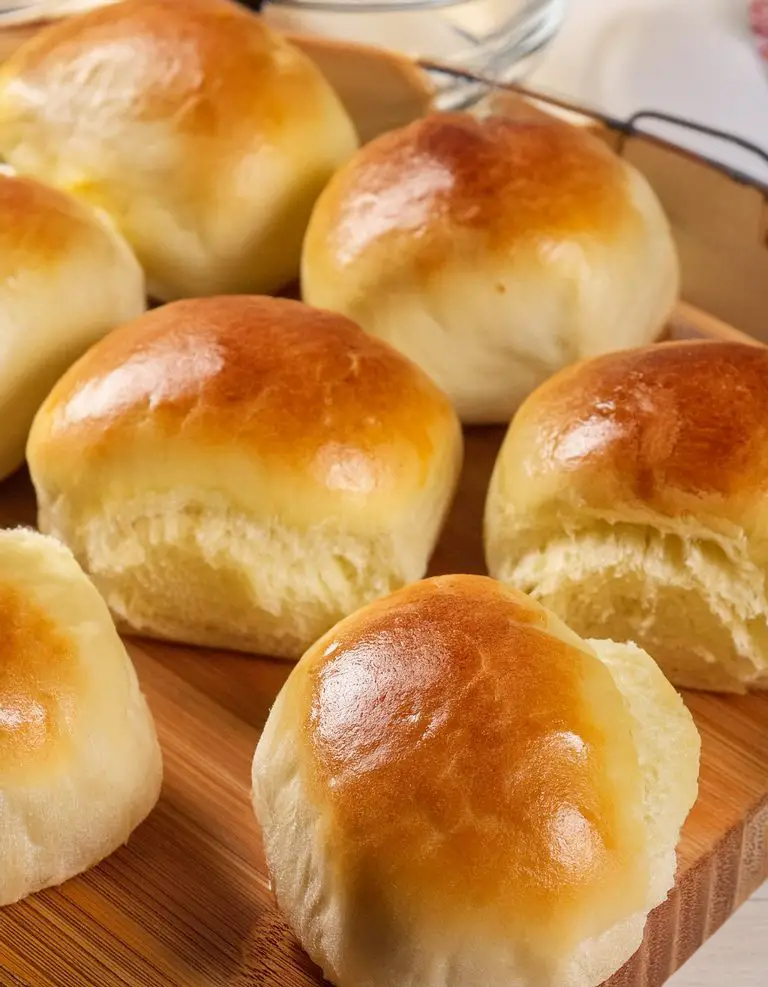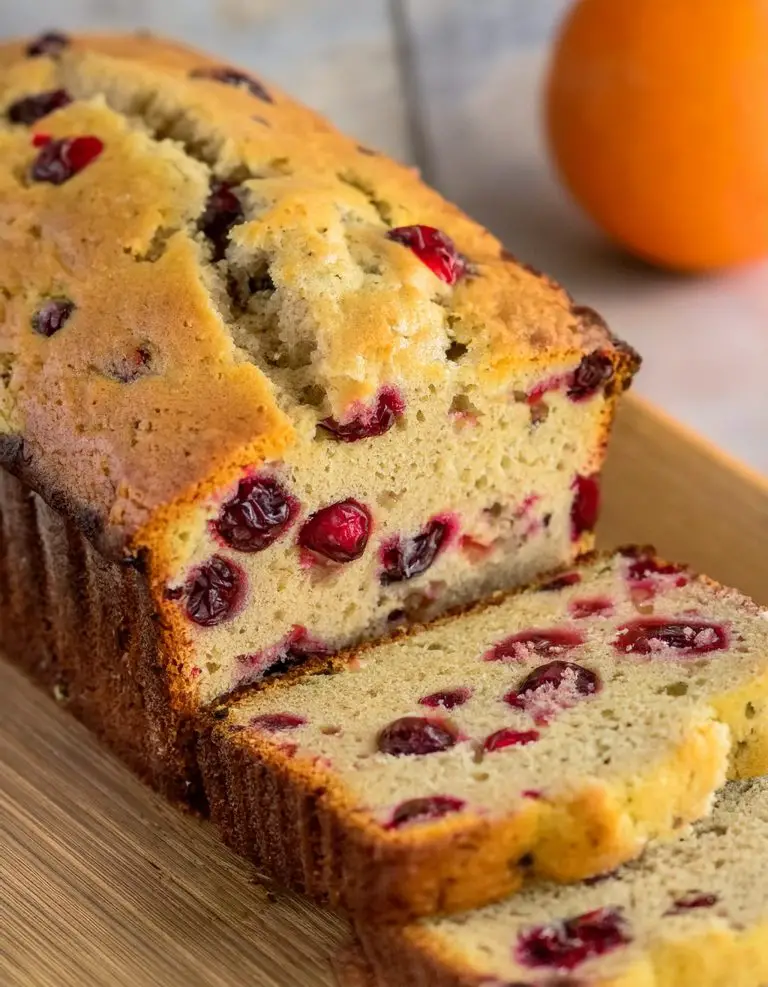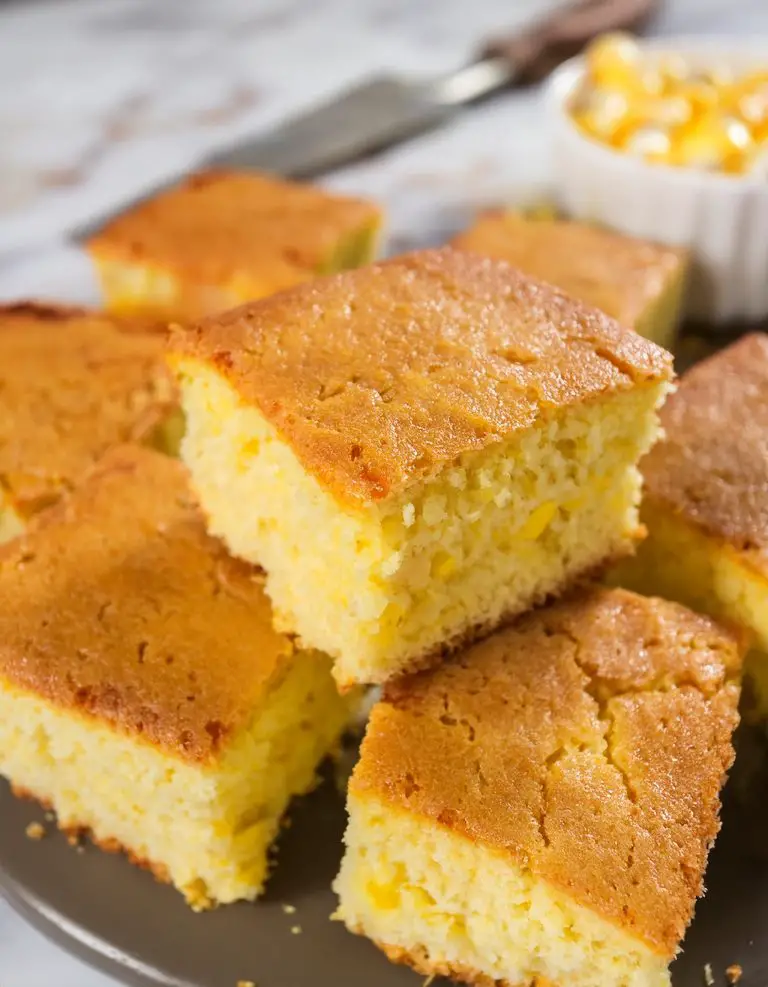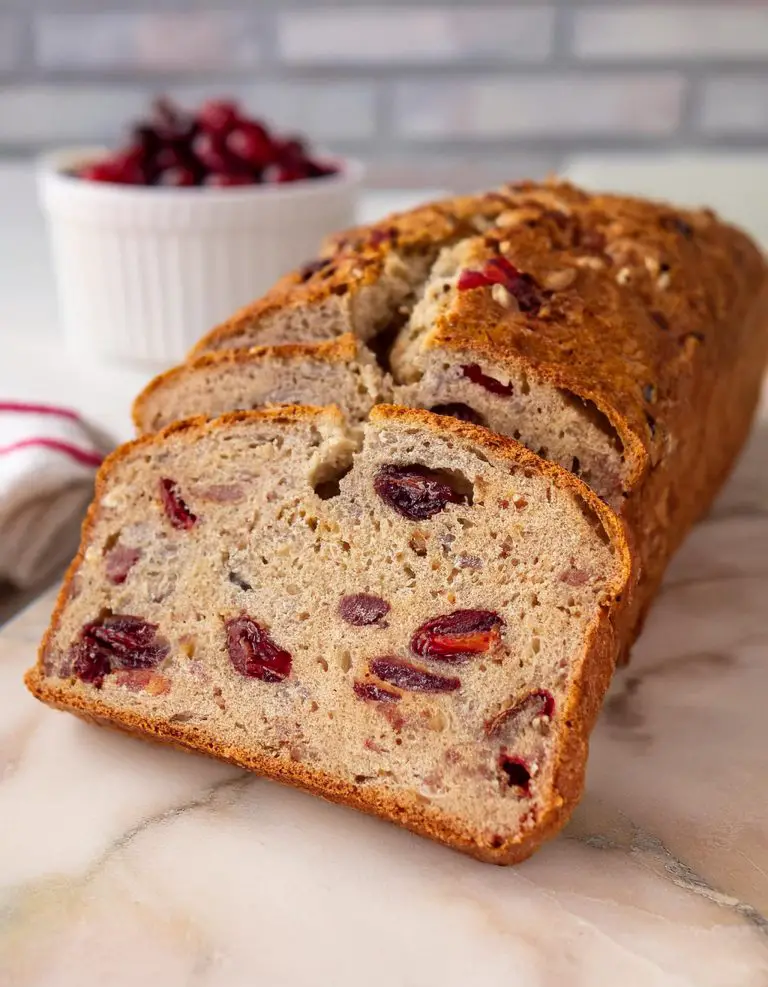Oatmeal Bread
If you’re looking for a wholesome, hearty bread that’s perfect for any occasion, oatmeal bread is a fantastic choice. This bread combines the richness of whole grains with a subtle sweetness, making it ideal for both sweet and savory toppings.
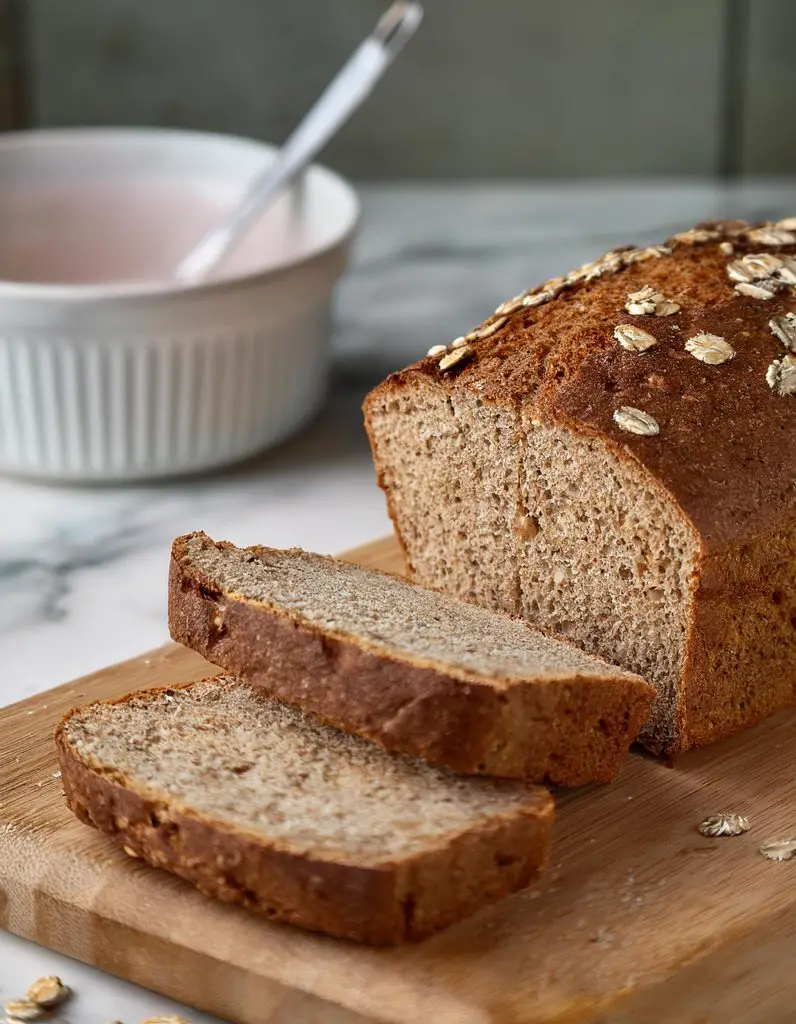
It’s not just delicious—it’s also nutritious, providing a good source of fiber and other essential nutrients. Making oatmeal bread at home can be a rewarding experience, as the aroma of freshly baked bread fills your kitchen and brings a cozy warmth to your home
Ingredients Needed for This Recipe
- 1 cup of rolled oats, plus extra for topping
- 1 1/4 cups of boiling water
- 1 tablespoon of unsalted butter
- 1/4 cup of honey or brown sugar
- 1 teaspoon of salt
- 1 packet (2 1/4 teaspoons) of active dry yeast
- 1/4 cup of warm water (about 110°F)
- 1/2 teaspoon of sugar
- 3 cups of all-purpose flour (you may need a bit more for kneading)
Instructions for Making Oatmeal Bread
Prepare the Oat Mixture: In a large mixing bowl, combine the rolled oats and boiling water. Add the tablespoon of butter, honey (or brown sugar), and salt. Stir until the butter is melted and the ingredients are well combined. Let this mixture sit until it cools to lukewarm (about 110°F).
Activate the Yeast: In a small bowl, dissolve the 1/2 teaspoon of sugar into the 1/4 cup of warm water. Sprinkle the yeast over the top and let it sit for about 5 minutes, or until it becomes frothy.
Combine the Ingredients: Add the yeast mixture to the cooled oat mixture. Gradually add the flour, one cup at a time, until a soft dough forms. You may need a bit more or less flour, depending on the humidity and the moisture content of your ingredients.
Knead the Dough: Turn the dough onto a floured surface and knead for about 8-10 minutes, or until the dough is smooth and elastic. Add a little flour as needed to prevent sticking.
First Rise: Place the kneaded dough in a greased bowl, turning it once to grease the top. Cover the bowl with a damp cloth and let it rise in a warm place until it doubles in size, about 1 to 1.5 hours.
Shape and Second Rise: Once the dough has doubled, punch it down and turn it onto a floured surface. Shape it into a loaf and place it in a greased 9×5 inch loaf pan. Sprinkle some rolled oats on top for a rustic finish. Cover and let rise again until nearly doubled, about 30-45 minutes.
Bake the Bread: Preheat your oven to 350°F (175°C). Once the dough has risen, bake it in the preheated oven for 35-40 minutes, or until the top is golden brown and the bread sounds hollow when tapped.
Cool: Remove the bread from the oven and let it cool in the pan for about 10 minutes. Then, transfer it to a wire rack to cool completely.
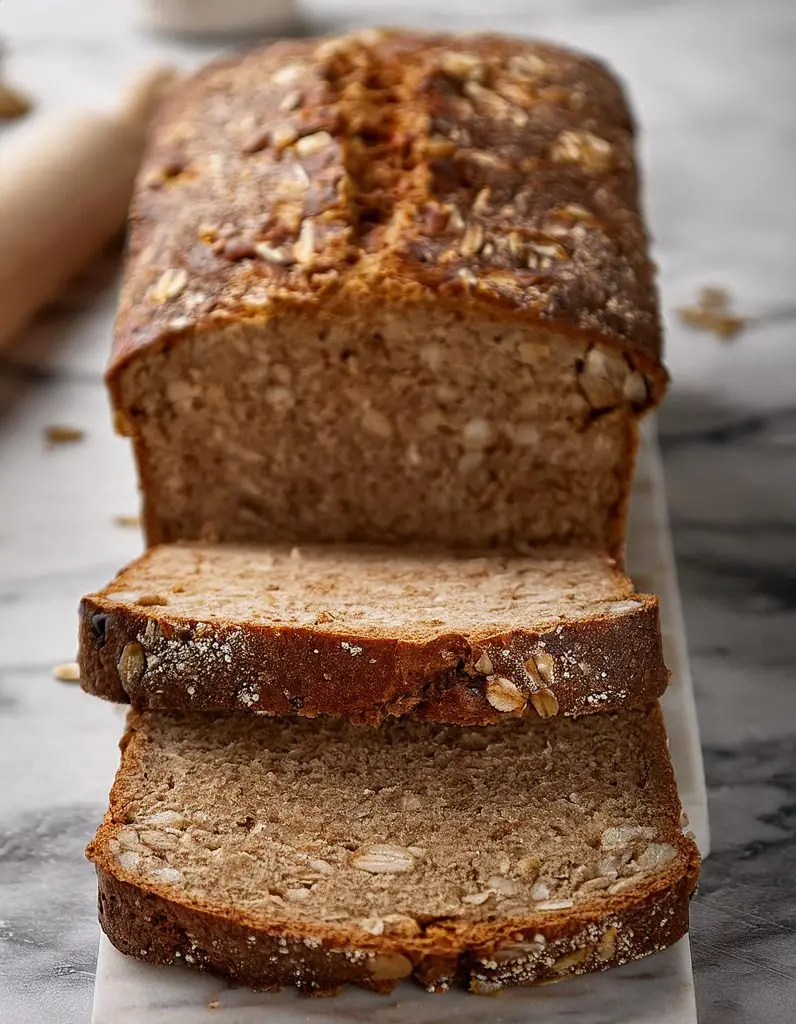
Tips for Perfecting the Recipe
Quality of Ingredients: The quality of the oats plays a crucial role in the texture and flavor of your bread. Use old-fashioned rolled oats for the best results as they absorb liquid well and add a pleasant texture. Instant oats can become too mushy, while steel-cut oats might be too coarse.
Temperature Matters: Ensure that the water added to the oats and the water used to activate the yeast are at the correct temperatures. Too hot, and you risk killing the yeast; too cold, and the yeast won’t activate properly. Aim for around 110°F for the best results.
Kneading: Proper kneading develops the gluten in the dough, which is essential for a good structure in your bread. If the dough feels too sticky during kneading, add flour a tablespoon at a time until it becomes smoother and less sticky. However, be careful not to add too much flour as it can make the bread dense.
First Rise: Allow the dough to rise in a draft-free environment. If your kitchen is cool, you can let the dough rise in an off oven with the light turned on, which provides enough warmth to help the dough rise.
Scoring the Dough: Before the second rise, consider scoring the top of the dough gently with a sharp knife. This not only helps the bread expand during baking but also gives it a professional, artisanal look.
Serving Suggestions
Breakfast Delight: Slice the bread thickly and toast it. Serve with a layer of butter and jam or honey for a simple, comforting breakfast.
Savory Sandwiches: The bread’s slight sweetness and hearty texture make it an excellent choice for sandwiches. Try it with a filling of turkey, cranberry sauce, and stuffing for a delightful post-Thanksgiving treat.
Soup Companion: Serve a warm slice of oatmeal bread alongside your favorite soups and stews. It’s particularly good with creamy or tomato-based soups.
French Toast: Use day-old oatmeal bread to make French toast. The bread’s texture absorbs the egg mixture beautifully, resulting in a rich and decadent breakfast.

Storage Tips
Cooling: Allow the bread to cool completely before storing. Storing warm bread can lead to moisture buildup and mold.
Wrap Well: Wrap the bread tightly in plastic wrap or store it in a resealable plastic bag. You can also wrap it in aluminum foil if you prefer.
Room Temperature Storage: Keep the bread at room temperature for up to 3 days. It’s best enjoyed within the first 48 hours.
Refrigerating: Refrigeration is not recommended as it can dry out the bread. However, if you live in a very humid climate, refrigeration may help prevent mold.
Freezing: For longer storage, freeze the bread. Slice it first if you want to toast slices directly from the freezer. Wrap it in plastic and then foil, and store in the freezer for up to 3 months.
Frequently Asked Questions
Can I use whole wheat flour in this recipe? Yes, you can substitute half of the all-purpose flour with whole wheat flour to increase the fiber content and nutritional value. Be aware that whole wheat flour absorbs more liquid, so you might need to adjust the amount of water slightly.
Why did my bread turn out dense? Dense bread can result from not enough yeast activity, which could be due to expired yeast, insufficient kneading, or not allowing enough time for the bread to rise. Make sure your yeast is active, and the dough doubles in size during the first rise.
Can I add nuts or seeds to the bread? Absolutely! Adding about 1/2 cup of walnuts, sunflower seeds, or pumpkin seeds can add texture and nutritional value to your bread. Mix them into the dough during the final stages of kneading.
How do I know when the bread is fully baked? The bread should be golden brown on top and sound hollow when tapped on the bottom. An instant-read thermometer inserted into the center of the loaf should read 190°F to 200°F.
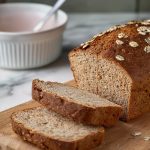
Oatmeal Bread
Ingredients
- 1 cup of rolled oats plus extra for topping
- 1 1/4 cups of boiling water
- 1 tablespoon of unsalted butter
- 1/4 cup of honey or brown sugar
- 1 teaspoon of salt
- 1 packet 2 1/4 teaspoons of active dry yeast
- 1/4 cup of warm water about 110°F
- 1/2 teaspoon of sugar
- 3 cups of all-purpose flour you may need a bit more for kneading
Instructions
- Prepare the Oat Mixture: In a large mixing bowl, combine the rolled oats and boiling water. Add the tablespoon of butter, honey (or brown sugar), and salt. Stir until the butter is melted and the ingredients are well combined. Let this mixture sit until it cools to lukewarm (about 110°F).
- Activate the Yeast: In a small bowl, dissolve the 1/2 teaspoon of sugar into the 1/4 cup of warm water. Sprinkle the yeast over the top and let it sit for about 5 minutes, or until it becomes frothy.
- Combine the Ingredients: Add the yeast mixture to the cooled oat mixture. Gradually add the flour, one cup at a time, until a soft dough forms. You may need a bit more or less flour, depending on the humidity and the moisture content of your ingredients.
- Knead the Dough: Turn the dough onto a floured surface and knead for about 8-10 minutes, or until the dough is smooth and elastic. Add a little flour as needed to prevent sticking.
- First Rise: Place the kneaded dough in a greased bowl, turning it once to grease the top. Cover the bowl with a damp cloth and let it rise in a warm place until it doubles in size, about 1 to 1.5 hours.
- Shape and Second Rise: Once the dough has doubled, punch it down and turn it onto a floured surface. Shape it into a loaf and place it in a greased 9×5 inch loaf pan. Sprinkle some rolled oats on top for a rustic finish. Cover and let rise again until nearly doubled, about 30-45 minutes.
- Bake the Bread: Preheat your oven to 350°F (175°C). Once the dough has risen, bake it in the preheated oven for 35-40 minutes, or until the top is golden brown and the bread sounds hollow when tapped.
- Cool: Remove the bread from the oven and let it cool in the pan fo

